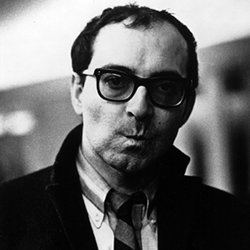
TIFF’s Cult Classics: Teen Rebels Review: Rushmore (1998) - NP Approved

Cast: Jason Schwartzman, Bill Murray, Olivia Williams
Director: Wes Anderson
Country: USA
Genre: Comedy | Drama
Editor’s Notes: The following review is part of our coverage for TIFF ‘s Next Wave’s annual five-movie screening marathon which ran on February 15th at TIFF Bell Lightbox. For more information on upcoming TIFF film series visit http://tiff.net and follow TIFF on Twitter at @TIFF_NET.
Wes Anderson’s Rushmore (1998) descends genealogically from a host of classical American screen comedies – most of them screwball – that take gleeful pleasure in the dismantling of classist social barriers. These movies are triumphs of transgression, celebrating the moments in which the hard line between polite society and that of the lower classes becomes a fluid membrane. We smile in Midnight (1939) when Don Ameche vaults out of his taxi cab and into a plush ballroom to take Claudette Colbert in his arms, in My Man Godfrey (1936) when house servant William Powell courts Carole Lombard under her wealthy family’s very noses, and in Rushmore when son of the local barber Max Fischer invites a billionaire and a prep school teacher to a play he has mounted in a public school auditorium, where their lives are to be changed forever.
Wes Anderson’s Rushmore (1998) descends genealogically from a host of classical American screen comedies – most of them screwball – that take gleeful pleasure in the dismantling of classist social barriers.
These breaches of the prevailing social order are the result of uncontainable romantic passions that don’t rest easy within its stringent parameters. Don Ameche won’t let society’s norms get in the way of his love for Claudette Colbert, nor William Powell his love for Carole Lombard, Katharine Hepburn for Cary Grant, and on the list goes. But when it comes to Max Fischer, played by Jason Schwartzman as a model of precocious eccentricity, there’s little he’s not passionate about. A compulsive overachiever attending the elitist Rushmore Academy on scholarship, Max is the president of each of the school’s diverse clubs and associations, the writer and director of ambitious school plays, and, as established in the film’s opening minutes, the hapless suitor of the school’s first-grade teacher, Rosemary Cross (Michelle Williams).

Secretly self-conscious of his family’s economic background (his dad is a neurosurgeon, he boasts), Max trudges through the film as if totally oblivious of the boundaries he’s crossing. While trying to win the affections of Miss Cross, he befriends the local steel magnate Herman Blume (Bill Murray, in perhaps his greatest performance), and spars with Rushmore principal Dr. Guggenheim as an adversarial equal. An adolescent pining for adulthood, Max will go to any length to fulfill his lovelorn yearnings and to prove the value of his artistic accomplishments.
As an unflagging romantic, Max is the comedic hero par excellence, the irrepressible agent of disorder who throws the civilized world out of whack and then reassembles it into something beautiful. But as a 15-yeard-old boy whose romanticism seeks to fill the void left by his mother’s death, he’s hopelessly lost and confused. It is here that Rushmore parts ways with its comedic descendants, revealing itself as something like a muted screwball, drenched in melancholy.
Wes Anderson’s vision of a broken world is not merely one in which social divisions keep people apart, but one in which individuals further entrench those divisions by wallowing in private losses and past failures.
Wes Anderson’s vision of a broken world is not merely one in which social divisions keep people apart, but one in which individuals further entrench those divisions by wallowing in private losses and past failures. Like Max, Herman and Rosemary are also contending with their own traumatic pasts, Herman as a Vietnam War veteran and Rosemary as the widow of an oceanic explorer. Herman has made of himself a financial success and Rosemary a schoolteacher, but neither is close to being happy. In a telling early scene, Herman sinks to the bottom of his pool in a desperate plea for solitude. Rosemary continues to live in her husband’s room and lines her classroom with fish tanks for mementoes.
It isn’t long before Herman and Rosemary fall in love behind Max’s back, leading to a bizarre love triangle whose innumerable complications fuel the plot’s haphazard trajectory. If Max is to deliver them from their own private hells, then he also has to contend with the damage his adolescent ego will suffer in the process. His hang-ups about status and achievement are the greatest roadblocks to his artistic – and personal – maturity.
Rushmore, in its compositional symmetries and geometrically exact tracking shots – not to mention its stage-curtain title cards evenly dispersed throughout – often gives off the illusion of a tightly structured, diagrammatic movie. But there’s a looseness to the film, an unpredictable push-pull rhythm that disrupts any smooth linear progression from despair in division to unified bliss. The film plays as a parade of riotous failures and mishaps offset by small victories that never seem to last. As Anderson cycles through these emotional ups and downs, he slowly starts to peel back his characters’ surface affectations and peer into their innermost insecurities, using every elegant arrow in the classical Hollywood quiver (the frequent Lubitsch comparisons are no joke) and just a tinge of deadpan irony to get the job done.
One of the few contemporary directors who takes artifice seriously, Wes Anderson orchestrates his movies so that flourishes of camera movement and production design correlate unambiguously with the emotional state of his characters, who ultimately emerge from the drudgery of lonely neuroticism into the sunshine of redemptive happiness. Anderson’s detractors view these formalist interventions with an air of skepticism – they are too precious, too coddling, too perfect.
But it is precisely through these theatrical contrivances and directorial intercessions that Rushmore finds itself within the richest tradition of American screen comedy. This fanciful harmony of form and content finds its full flowering in the film’s final shot. That a symmetrically balanced, meticulously choreographed moving tableau signifies the restoration of order and happiness to the lives of the film’s many characters is precisely the kind of aesthetic miracle that the classical cinema is all about.
Related Posts
Stuart Collier
Latest posts by Stuart Collier (see all)



























